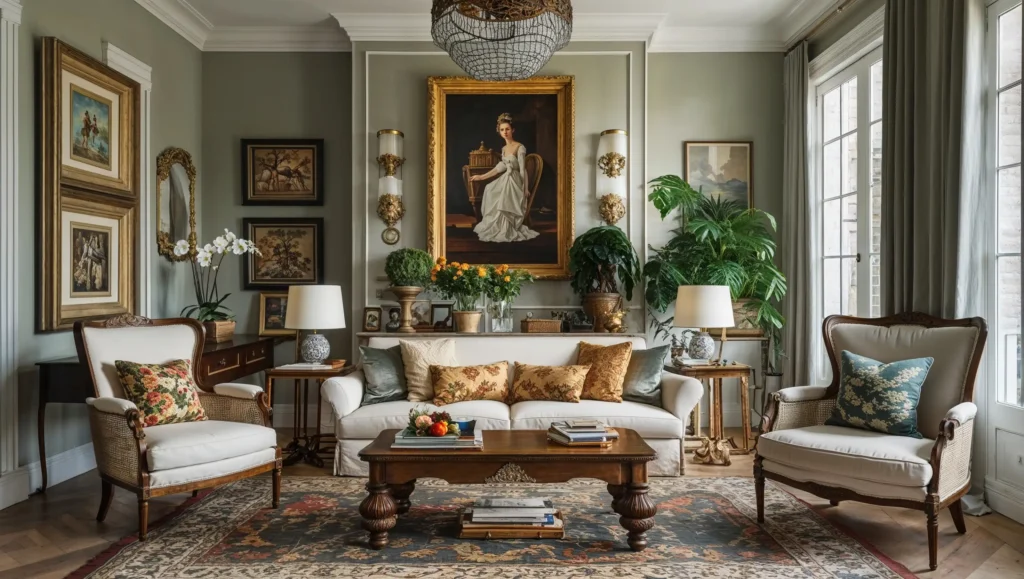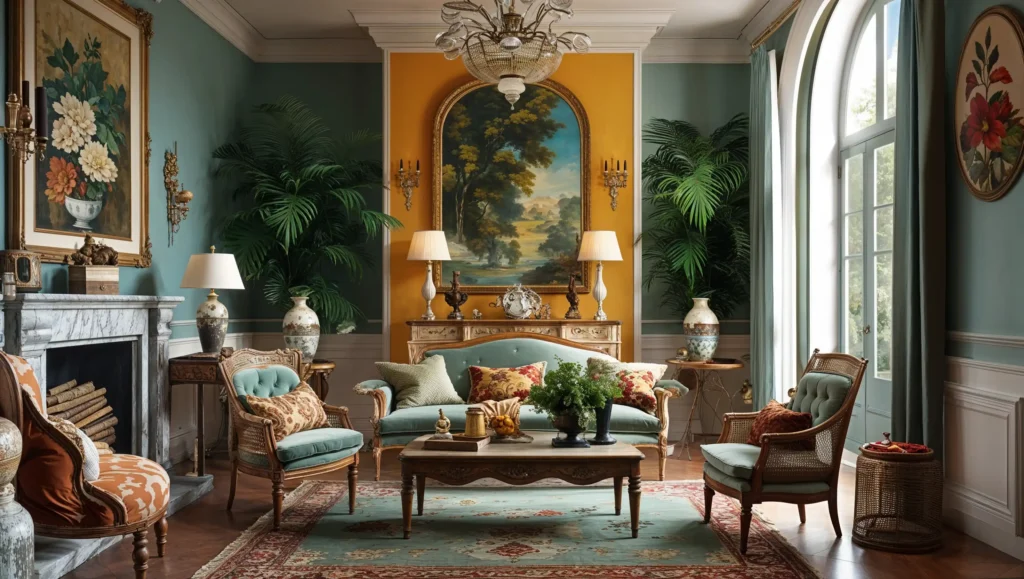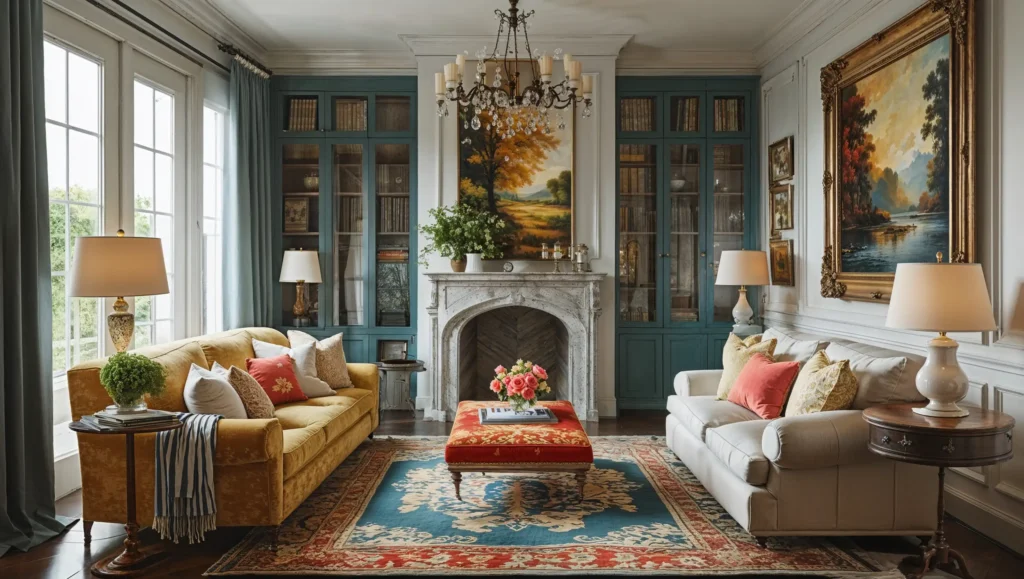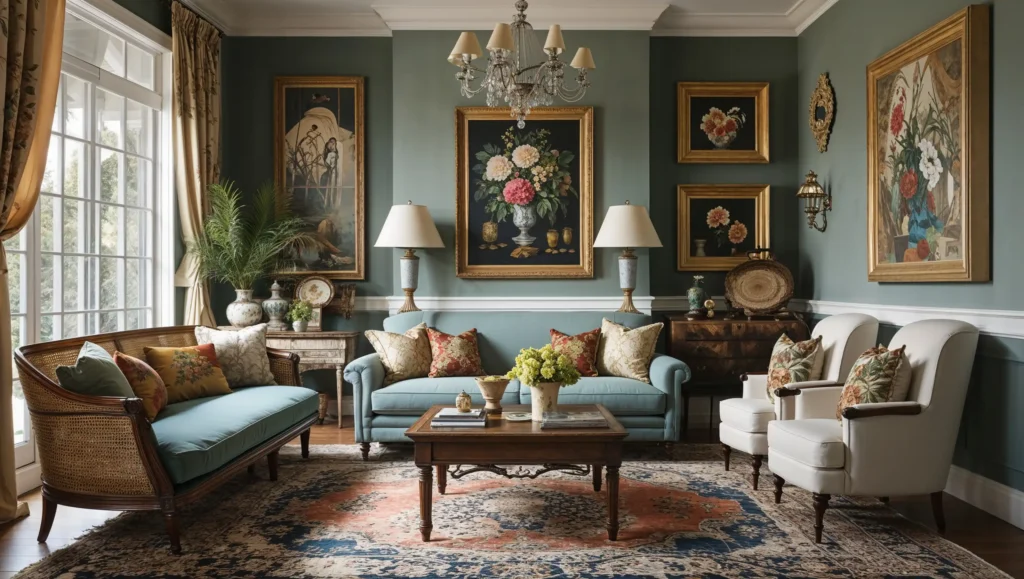Discover how thoughtfully incorporating vintage finds and art elevates home interior design, creating spaces rich in character, history, and personal expression.
Why Embrace the Fusion of Art and Vintage in Your Home?
In a world often dominated by mass-produced items and fleeting trends, the deliberate integration of art and vintage pieces into home interior design offers a powerful antidote. This approach transcends mere decoration, transforming living spaces into narratives that speak of history, personal journeys, and individual tastes. Why, then, should one consider embracing this enriching fusion?

Firstly, incorporating vintage injects a unique sense of character and soul into a home. Each antique or vintage find carries its own story, a whisper of the past that adds depth and intrigue to a room. These pieces often boast craftsmanship and materials rarely found in contemporary mass production, lending an inherent quality and distinctiveness to your décor. Secondly, art, in its myriad forms, serves as a powerful expression of personality and emotion.
Whether it’s a striking painting, a thought-provoking sculpture, or a collection of cherished photographs, art personalizes a space and creates focal points that spark conversation and evoke feeling. The marriage of vintage and art, therefore, results in interiors that are not only visually appealing but also deeply personal and resonant, reflecting a curated life rather than a merely decorated space.
How Can Vintage Finds Add Character and Depth to Modern Interiors?
Vintage pieces possess an inherent ability to inject character and depth into even the most contemporary of interiors. Their weathered patinas, unique silhouettes, and the stories they carry provide a welcome contrast to the often sleek and minimalist aesthetic of modern design. How can one effectively weave these treasures from the past into a modern setting?
Consider using a statement vintage piece as a focal point in a room. A beautifully restored mid-century credenza against a backdrop of clean, modern lines can instantly elevate the space and become a conversation starter. Similarly, antique rugs with intricate patterns can add warmth and texture to a room with polished concrete floors and minimalist furniture.

The key is to strike a balance, allowing the vintage items to stand out without overwhelming the modern elements. Think of it as a dialogue between different eras, where the old complements the new, creating a rich and nuanced visual tapestry. Furthermore, vintage often offers sustainable design choices, giving pre-loved items a new lease on life and reducing the demand for new resources.
What Types of Art Best Complement Vintage Decor?
The interplay between art and vintage decor can be a harmonious and enriching one, provided careful consideration is given to their relationship. What types of art tend to best complement vintage settings? The answer is wonderfully diverse and often depends on the specific era and style of the vintage pieces themselves.
For homes featuring Victorian or Edwardian antiques, consider displaying period-appropriate artwork such as oil portraits, landscapes, or botanical prints. These styles often share a similar aesthetic sensibility and can enhance the historical feel of the space. Mid-century modern vintage furniture pairs beautifully with abstract expressionist art, geometric prints, or even vintage posters from the same era, creating a cohesive and stylish retro vibe.
Rustic or farmhouse vintage finds can be wonderfully juxtaposed with folk art, primitive paintings, or even contemporary pieces that share a similar textural or earthy quality. Ultimately, the best art to complement vintage decor is that which resonates with your personal taste and creates a visual dialogue with the historical pieces, whether through shared colors, themes, or contrasting styles.
How Can You Curate an Art Collection That Enhances Your Home’s Vintage Charm?
Curating an art collection that enhances your home’s vintage charm is a journey of personal discovery and thoughtful selection. It’s about finding pieces that not only appeal to your aesthetic sensibilities but also harmonize with the historical context and character of your vintage decor. How can you embark on this rewarding process?

Begin by considering the era and style of your vintage pieces. Do you primarily collect mid-century modern furniture, or are you drawn to the ornate details of Victorian antiques? Understanding the dominant style of your vintage will help guide your art choices. Don’t feel restricted to only collecting art from the same period, however. Juxtaposing different styles can create an exciting and dynamic visual narrative. Consider the scale and color palette of both your art and vintage pieces.
A large, bold abstract painting can provide a striking contrast to delicate antique furniture, while a collection of smaller, monochromatic prints might complement a room filled with richly colored vintage textiles. Trust your instincts and collect pieces that you genuinely love and that speak to you on a personal level. Over time, your curated collection will become a unique reflection of your individual style and a testament to the harmonious marriage of art and vintage in your home.
What are Creative Ways to Display Art and Vintage Together?
The way you display your art and vintage pieces is just as important as the items themselves in creating a cohesive and visually engaging interior. There are numerous creative ways to showcase these treasures together, moving beyond traditional gallery walls and static arrangements.
Consider creating vignettes where art and vintage objects interact. A vintage dresser topped with a collection of antique perfume bottles and a striking piece of contemporary sculpture can create a captivating focal point. Lean larger framed artworks casually against walls or on shelves alongside vintage books and decorative objects for a more relaxed and lived-in feel.
Group smaller vintage items, such as antique cameras or ceramic figurines, together on a shelf or tabletop, with a complementary piece of art hung nearby to anchor the arrangement. Don’t overlook unexpected spaces, such as hallways or even bathrooms, for displaying art and smaller vintage finds. The key is to experiment with different arrangements, playing with scale, texture, and color to create visually interesting and harmonious displays that tell a story.
How Can You Source Unique Vintage Finds and Art for Your Home?
Sourcing unique vintage finds and art for your home can be an exciting adventure, leading you to discover hidden gems and one-of-a-kind pieces that add soul and character to your living spaces. Where can you unearth these treasures? The possibilities are plentiful and varied.

Explore local antique stores and flea markets, where you can often find unique vintage furniture, decorative objects, and even smaller pieces of art at reasonable prices. Estate sales and auctions can be another rich source for uncovering more significant vintage pieces and sometimes even entire collections of art. Online marketplaces and vintage shops offer a vast selection, allowing you to browse from the comfort of your home, though it’s always wise to carefully review descriptions and images.
Consider supporting local artists and craftspeople for unique and contemporary art that can beautifully complement your vintage finds. Don’t be afraid to venture off the beaten path and explore smaller, less well-known shops or galleries. The thrill of the hunt is part of the fun, and the unique pieces you discover will undoubtedly add a special touch to your home.
What Considerations Should Guide the Placement of Art in a Vintage Setting?
The placement of art within a vintage setting requires careful consideration to ensure that both the artwork and the vintage pieces are showcased to their best advantage and that the overall aesthetic feels balanced and harmonious. What factors should guide your decisions regarding art placement?
Consider the scale and proportions of both the artwork and the surrounding vintage furniture. A large, impactful painting might be best suited for a prominent wall above a substantial piece of furniture, while smaller prints or photographs can be grouped together to create a visually interesting gallery wall or placed on shelves alongside vintage objects. Pay attention to sight lines and the natural flow of movement within the room.
Place artwork where it will be easily visible and appreciated. Consider the lighting, both natural and artificial, to ensure that your art is well-illuminated and its colors and textures are highlighted. Don’t be afraid to experiment with different heights and arrangements until you find what feels visually pleasing and creates the desired impact. The goal is to create a dialogue between the art and the vintage pieces, where each enhances the other without overpowering the overall aesthetic.
Frequently Asked Questions About Integrating Art and Vintage into Home Design
- Will vintage pieces clash with modern art? Not necessarily. The juxtaposition of old and new can create a dynamic and visually interesting interior. The key is to find pieces that complement each other in terms of color, scale, or overall aesthetic.
- How do I avoid my home looking like a museum when incorporating vintage? Focus on creating comfortable and livable spaces. Mix vintage finds with contemporary pieces and personal items to avoid a static or overly curated feel.
- What’s a good starting point for incorporating vintage into my home? Begin with smaller, less expensive items like vintage lamps, mirrors, or decorative objects to get a feel for the style before investing in larger furniture pieces.
- How do I care for vintage furniture and art? Research the specific care requirements for each piece. Gentle cleaning, avoiding harsh chemicals, and protecting items from extreme temperatures and direct sunlight are generally good practices.
- Should all my vintage pieces be from the same era? Not at all. Mixing vintage pieces from different eras can create a more eclectic and personally curated look.
- How do I know if a piece of vintage furniture is authentic? Look for signs of age, such as patina, construction methods, and original hardware. Researching specific styles and manufacturers can also be helpful.
- Where can I find affordable art to pair with vintage decor? Consider supporting emerging artists, exploring prints and photography, and even framing children’s artwork for a personal touch.
- How do I create a cohesive look when mixing art and vintage? Focus on establishing a consistent color palette, repeating certain textures, or finding a common thread in the styles you choose.
- Is it okay to paint or reupholster vintage furniture? It depends on the piece and its historical significance. While some purists prefer to keep vintage items in their original condition, sympathetic restoration or updating can give a piece new life and better fit your style.
